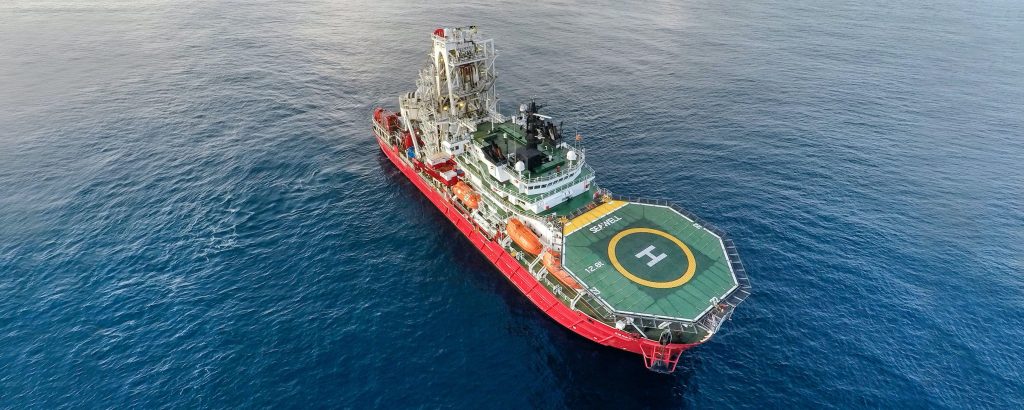Working at Sea: IMO review of STCW identifies new focus areas
Published on 28 March 2024
The International Convention on Standards of Training, Certification and Watchkeeping for Seafarers (STCW), 1978, as amended, is an international agreement which sets the standards of competence for seafarers internationally. The 1978 STCW Convention entered into force on 28 April 1984 and since then several revisions have taken place, with the last adopted in 2018.
The International Maritime Organization (IMO) has now started work on the long-awaited comprehensive review of both the Convention and Code. IMCA attended the meeting of the IMO’s Sub-Committee on Human Element, Training and Watchkeeping (HTW) in February 2024 and participated in the Working Group which was established on the Comprehensive Review of the 1978 STCW Convention and Code.

IMCA Contact
Margaret Fitzgerald
Head of Legal & Regulatory Affairs
Contact
The Working Group developed a roadmap and methodology for the work, as part of which, 22 specific areas were identified as requiring review as set out below. Members’ attention is particularly drawn to e-certification (2), training requirements for emerging technologies on ships (3), psychological safety, bullying and harassment, including sexual assault and sexual harassment (SASH), gender diversity and gender sensitisation (7), and mental health (8).
- Emerging technologies on ships and ship operations.
- Digitalisation of documentation, including certificates issued under STCW.
- Emerging technologies in education and training.
- Facilitation, flexibility, and quality of onboard, shore-based and workshop skills training, including use of simulators.
- Flexibility and efficiency in implementation of new training requirements and reduction of administrative burdens.
- Requirements for sea time or practical experience in relation to new and emerging technologies including the use of simulation.
- Psychological safety, bullying and harassment, including sexual assault and sexual harassment (SASH), gender diversity, and gender sensitisation.
- Mental health.
- Twenty-first century and interpersonal skills.
- Addressing inconsistencies.
- Addressing different interpretations.
- Addressing taxonomy and terminologies.
- Flexibility in revalidation of certificates and endorsements.
- Overview of the implementation of the Convention, in particular the need to update the STCW “Whitelist.”
- Lessons learned.
- Flexibility.
- Alternative certification under chapter VII.
- Watchkeeping arrangements and principles to be observed (chapter VIII).
- Alignment of STCW with requirements placed on ships, seafarers, and shipowners by other IMO and relevant international instruments.
- Cybersecurity.
- Implementation and transitional provisions.
- Addressing outdated training requirements.

Photo of Seawell, credit: Helix Energy Solutions
The comprehensive review will be conducted in two phases, with phase one involving a review of the Convention to identify gaps and a second phase on the revision stage, involving the development of amendments to addresses gaps identified in phase one, as is explained below.
Phase one – Review/Identification of gaps
The Convention and Code will be reviewed regulation by regulation and section by section (including articles) to identify gaps/provisions that should be addressed based on two criteria:
Criterion 1: Issues emanating/resulting from external factors including trends and new developments.
For example: use of new technological developments in ships and ship’s operations, technological advances in training, requirements from other Conventions, etc.; and
Criterion 2: Issues emanating/resulting from existing provisions based on implementation experiences.
For example: inconsistencies, differing interpretations, challenges with the interpretation, flexibility, etc…
Phase two – Revision
Amendments will be developed to address gaps identified under phase one. This second phase may result in consequential amendments to other regulations and sections.
The documents submitted for discussion under this second phase will be structured as follows:
- Provisions and gaps identified – from the list generated in phase one;
- Proposed amendments; and
- Explanation.
Phase one is expected to be concluded by Spring 2025, and phase two by Spring 2027.
Commenting on the launch of the comprehensive review of the STCW Convention, Margaret Fitzgerald, Head of Legal and Regulatory Affairs, IMCA, said: “A lot has changed in the decade and a half since the last major revision. For example, with the decarbonisation of shipping moving ahead seafarers will have to be trained in the safe use of emerging low carbon fuels and technology on board. It is also great to see an increasing focus on the wellbeing of crew. This review will ensure that the STCW remains relevant in a rapidly shifting world.”
“Acknowledging the fact that more women are serving on ships than before, this comprehensive review highlights psychological safety, sexual assault and sexual harassment (SASH), gender diversity and gender sensitisation as key areas to be addressed. In addition, it sees mental health as a growing area of concern following the pandemic.”
“IMCA’s engagement with the topic will be led by the Marine Policy & Regulatory Affairs (MPRA) Committee which will lean on the expertise and experience of other Committees at IMCA, including the Marine Division and the Competence & Training Committee.”
IMCA will be sharing regular updates on its website over the coming months.
